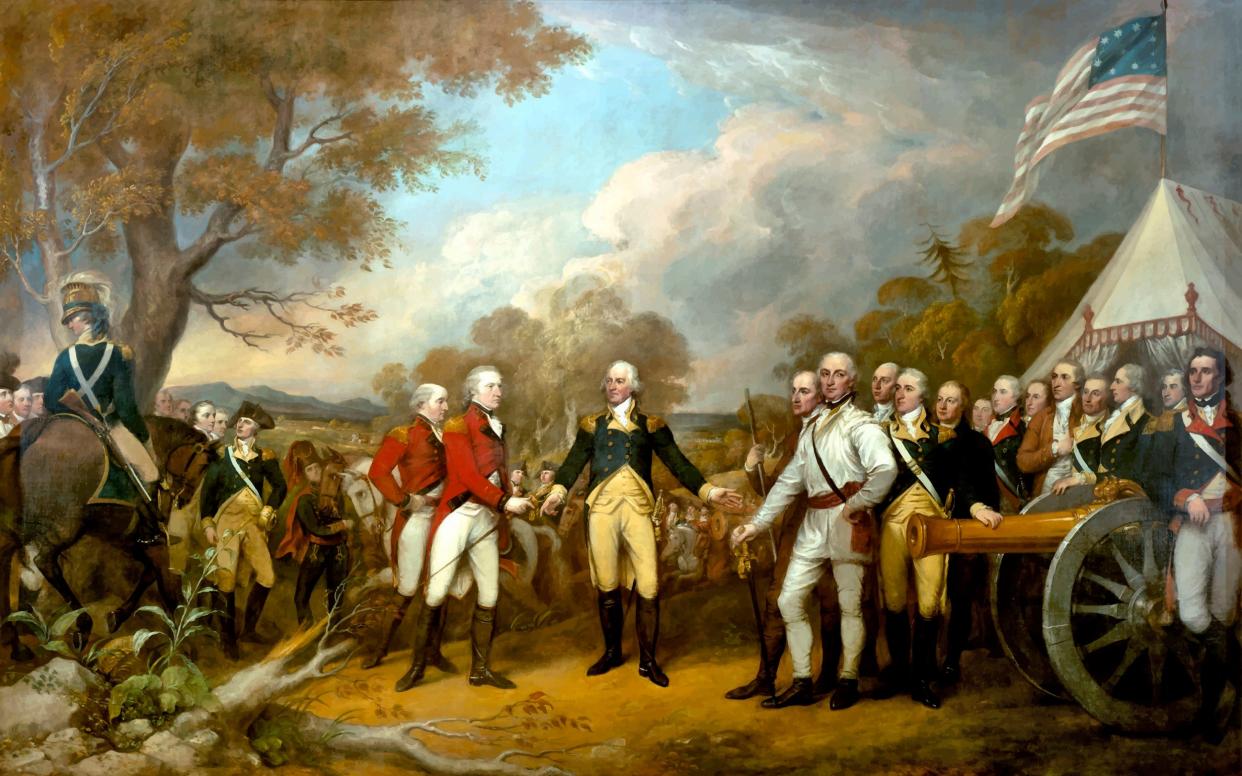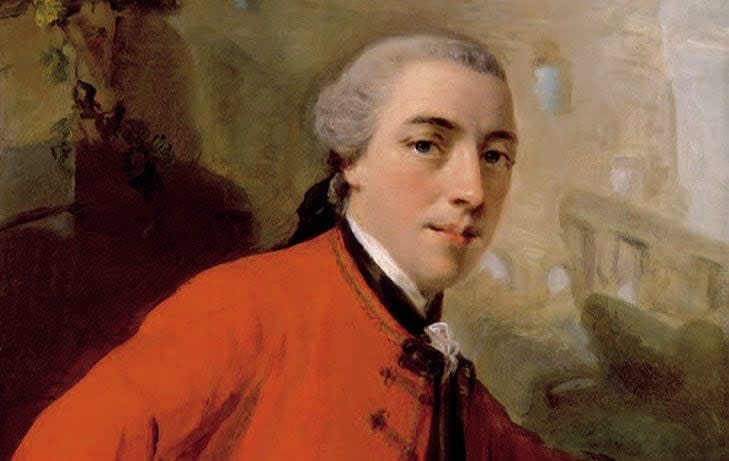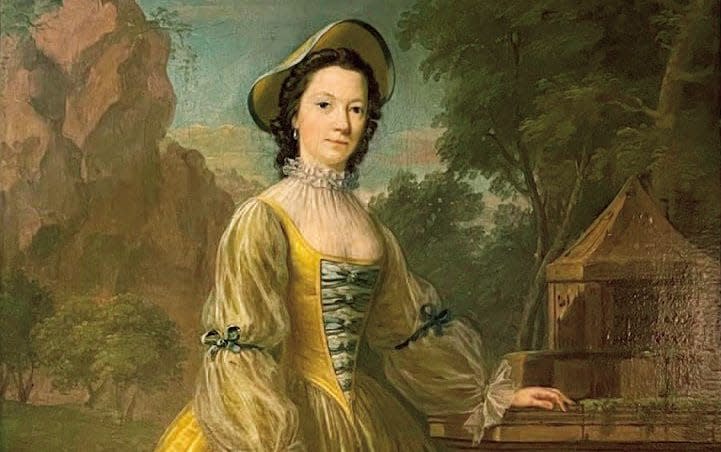Dandy, playwright and MP – who was ‘the man who lost America’?

The surrender of General John Burgoyne’s British army at Saratoga, New York, on October 16 1777, was one of the defining moments of the American War of Independence. The defeat encouraged France and Spain to enter the war on America’s side and was, for an isolated Britain, the beginning of the end. After the war had ended with Britain’s humiliation in 1783, Burgoyne was known as “the man who lost America”. Surely, posits American law professor Norman S Poser, “this humane, ambitious, patriotic, sensual, sociable, proud, brave, and sometimes reckless man deserves to be remembered for more than being the cause or scapegoat of one of Britain’s worst military disasters”.
He has a point. Burgoyne was certainly a man of many parts. Born into a well-connected family that could trace its descent from John of Gaunt, father of Henry IV, he owed much of his career to his aristocratic in-laws, successive Earls of Derby, who bought him an army commission and used their influence to secure Burgoyne a seat in the House of Commons. While Poser is sometimes a little shaky on military detail (dragoons by the early 18th century were no longer, as he states, infantry on horseback but rather fully-fledged cavalry, and the Royal Military College at Sandhurst was not founded until the 19th century) he does paint a convincing picture of an ambitious young officer who was determined to perfect his trade by reading books and learning from mistakes.
Part of the disastrous 1757 expedition to St Malo in Brittany that ended in a humiliating rout by the French, Burgoyne noted the “damage done by undisciplined British soldiers, not only to civilians and their property, but also to the army’s mission”, and vowed to prevent such depredations in the future. He was as good as his word. As commander of the 16th Light Dragoons, he insisted on a Code of Instructions for the officers that was, in Poser’s words, “remarkable for its humanity and pragmatism”. At a time when corporal punishment was the norm, Burgoyne made officers treat their men as thinking beings and used both stick and carrot. He insisted, moreover, that all officers could perform any of the men’s duties, including
shoeing a horse.
He reaped the reward in Portugal in 1763 when his mixed brigade of cavalry and infantry won a signal victory over the Spanish at Valencia de Alcántara. His triumph, writes Poser, “was not just due to his audacity and personal courage but just as much to the training, both technical and moral, he had given his officers and enlisted men”.
Some officers find a natural ceiling. It was said of Sir Redvers Buller, the error-prone British Commander at the start of the Anglo-Boer War of 1899-1902, that he made a “superb major, a mediocre colonel, and an abysmally poor general”. This is because high military rank requires more than physical bravery, personal leadership, and tactical skill; ideally, it needs an understanding of overall strategy and a willingness to sacrifice personal ambition for the greater good, or moral courage. This, ultimately, is where Burgoyne came up short in America.

Before he got there, he made a name for himself as a Man About Town with a taste for gambling and socialising. As an army officer who also sat in the House of Commons for the last 31 years of his life, Burgoyne was in a delicate constitutional position. Since the dictatorship of Oliver Cromwell, military officers were expected to stay out of politics; Burgoyne, in addition, had a duty of allegiance to his monarch, George III, that made it hard for him to vote with his conscience and against the King’s ministers. Yet he did this on at least two occasions, including a refusal to ratify the government’s agreement with Spain over the Falkland Islands. On learning of Burgoyne’s disloyalty, the King noted: “I almost imagine it was a mistake.”
In 1774, Burgoyne also wrote the first of four plays to be performed in London’s West End, The Maid of the Oaks, encouraged by the age’s great actor David Garrick, manager at the Theatre Royal, Drury Lane, where Burgoyne haunted the green room with his friend, the artist Joshua Reynolds. It was a “merry romp” that enchanted audiences, with one character – witty Lady Bab Lardoon, “princess of dissipation” – standing out in Poser’s reading as an unlikely but not unlikeable champion of women’s rights. It was often revived (Burgoyne offered his share of the profits to Garrick’s fund for “decayed actors”) and his association with theatre continued in his later years. After his wife’s death, he took an actress as a mistress, while his horse-racing nephew Edward (founder of the Derby) married the star of one of his plays.
Shortly before the outbreak of war with the American colonists in 1775, Burgoyne was one of three major generals sent out to reinforce the British garrison. He commanded the artillery at the costly victory over the rebels of Bunker Hill near Boston in June 1775 and was second-in-command of Sir Guy Carleton’s Canada campaign a year later. He hankered for an independent role, however, and was granted his wish in 1777 after he convinced Lord George Germain, the War Secretary, that the best hope of an early end to the war was to trap the rebel forces between a force advancing north from New York and another south from Canada. He was put in charge of the Canada force.

The great flaw in Burgoyne’s strategy was that he failed to secure the cooperation of his superior, William Howe, who chose to attack the rebel capital of Philadelphia instead of cooperating with the Canada force. Burgoyne went ahead regardless as “wishful thinking took the place of careful preparation”. The end came at Saratoga when Burgoyne, too weak to continue or retreat, surrendered his much-depleted army to the American general Horatio Gates.
Poser has written a fine biography of a “failed general but a brave soldier and leader of men, a successful playwright, and a reforming politician”. He did not lose America on his own: Germain, Howe and others were more culpable. But Burgoyne played his part and, for all his undoubted talents, it is unlikely that we would be reading about him now but for his central role in the ill-fated march to Saratoga.
From the Battlefield to the Stage is published by McGill-Queen’s University Press at £27.99. To order your copy for £25 call 0844 871 1514 or visit Telegraph Books

 Yahoo Movies
Yahoo Movies 
